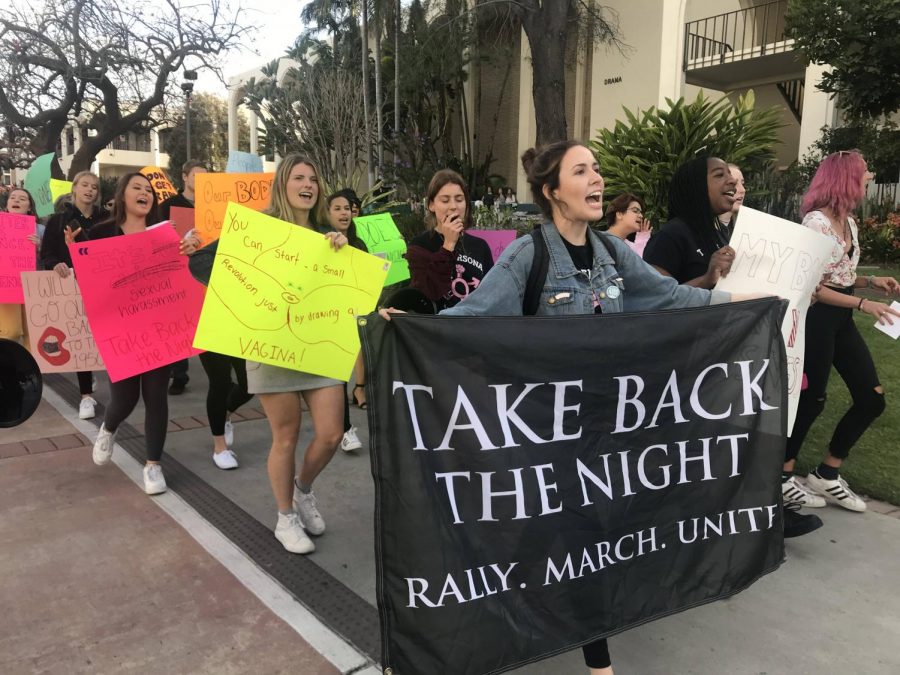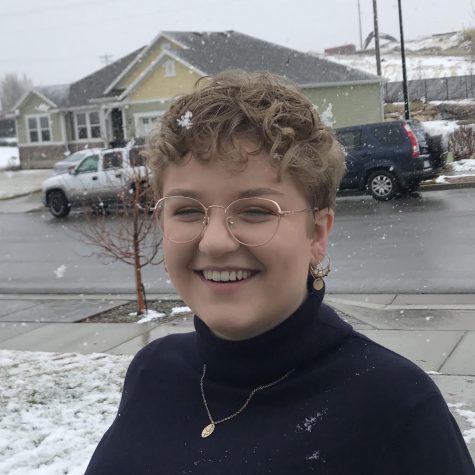Targeting uninterested students is a hard task that sexual awareness and violence prevention programs try to constantly tackle. They are constantly using new strategies to get the whole San Diego State campus involved.
“There are so many excellent resources, but that makes it harder to say there is a one stop shop which can make it more confusing,” Stephanie Galia, the director of Well-being and Health Promotion said. “But it’s important and intentional that we advertise all of them instead of one spot because we know that when people are experiencing trauma they have a variety of reactions that are all valid and it’s not a one size fits all.”
When it comes to the issue of sexual assault, there are so many different levels of involvement that there is no such thing as one perfect resource. Some may be passionate about the topic, while others are only slightly interested or completely closed to discussing the topic. The reasons for this passion also vary depending on a student’s experience with the topic, whether they’re a survivor of sexual violence, know people affected by it or want to do something to help.
Different departments on campus, such as the Well-Being and Health Promotion department and Women’s Resource Center, try to reach all students no matter their interest level.
The Women’s Resource Center focuses on three main events called The BRAVE project, Take Back the Week and discussions at new student orientation.
The BRAVE project is a comprehensive training on how to prevent sexual violence that tries to understand the root cause of violence and how to dismantle it in society. This event is targeted towards students who are interested and passionate about ending sexual violence, but is open to everyone, according to Jessica Nare, associate director of the Women’s Resource Center.
“We wanted to provide a training that was really in depth and sensitive, but it’s not a training set up to reach a wide audience,” Nare said.
Their Take Back the Week program is how they try to reach a bigger audience. Nare said this event, which happens every April, is when the discussion reaches the most students on campus.
But, every student will face the issue whether they want to or not at freshman orientation during the Women’s Resource Center’s presentations on sexual assault and consent.
“They hear a lot of powerful information right off the bat when they arrive on campus and they can hear what the resources are right away,” Nare said.
Students do seem to retain the information from freshman orientation about sexual assault and violence prevention. Senior biology student Alex Ahooja said she remembered the presentation, but that the university overall seems to stay quiet on the issue.
“I think they do a really good job at freshman orientation, but I’ve seen it come up zero times since,” Ahooja said. “It’s a little concerning to me, but it’s really hard to advertise services that link to tough things.”
Nare said she believes an area of growth for the Women’s Resource Center would be having more things that might be welcoming to people who are still learning about these topics. She said there are a few obvious barriers to bringing in the students who need to hear this information the most, but who generally avoid it.
“It’s hard to make mandatory participation in something as sensitive as sexual violence because it is a hard and sensitive topic,” Nare said. “It’s not always comfortable or acceptable to everybody so we run into challenges with that.”
This is one of the central struggles of this kind of support and one the Well-Being and Health Promotion department experiences as well. One of the ways their department tries to reach a wider audience is through word of mouth and having involved students on the ground talking with their peers.
“We do try to think about how to reach those who are uninterested and unmotivated for a variety of reasons,” Galia said. “I do worry a lot, it’s important for us to provide programming to people who are interested, passionate and motivated because they are the people who can be change makers, but how are we reaching the students who won’t come and don’t want to be there? We can’t make true community change unless you are engaging everyone on all levels.”
The is an issue students from all corners of the university seem to see an understand. Chemistry graduate student Rich Thai said he believes word of mouth is probably one of the most effective approaches.
“There’s only two main ways I know of that they get the word out,” Thai said. “The Wellness Center likes to send out a lot of emails which helps with exposure and there are posters in popular areas. I think people who are involved should pass the message along from person to person.”
Well-Being and Health Promotion tries to reach the less involved students by not focusing on events people can just walk into, believing only motivated and interested people will come.
One of the programs it does to reach out is called bystander intervention training. This is for anyone who lives in resident education or is a part of a university seminar. Galia said this group is mainly freshman, but it encourages the students to not stand by idly and to become someone who gets involved in problematic or emergency situations.
Another form of training on campus is the required sexual violence training that all incoming students take. This is required so all students, whether they are interested or not, will get trained in the topic of sexual violence. Faculty and staff are also required to take it.
Consent training exists on campus as well through Well-Being and Health Promotion, but this is mainly requested by student organizations and classrooms.
Then, there is a climate survey that goes out to all students that asks for feedback about their experiences on campus. Nare said the survey comes out every other year to gauge the attitudes and beliefs people hold towards and around the topic of sexual violence. This year will be the third time this survey has been distributed.
“It helps shape what our campus response is to this issue and helps us program to prevent sexual violence from happening,” Nare said.
Sometimes getting students involved takes other types of motivation rather than just advertisements. Galia said extra credit in classes is a key component to getting students to events. Events can also count as accreditation for student organizations.
One way students in Greek life can get directly involved is through FratMANners and SISSTER. These are unit classes that students can enroll in for a whole semester. The classes take up to 40 students, which is the maximum number of students they can train.
“It offers a sense of community that fraternities and sororities can build with one another outside of their chapters,” Galia said. “We know certain party, club and bar environments can be high risk for this topic, so we want the students to be out there watching for things and helping prevent these things. We are hoping we are making the community change from the ground up.”
One way they are trying to reach out to the whole campus is the Let’s Talk campaign. They want to focus on different topics at different times such as stalking and domestic violence.
There are multiple ways these departments market to students. They do fliers, emails, newsletters, digital ads on TVs on campus and others. The Women’s Resource Center has a newsletter that students can sign up for through their Facebook page or in the office. Faculty members are also a resource because they promote events and offer the extra credit motivator.
Both departments also use social media heavily. Well-Being and Health Promotion doesn’t have a big following, with 785 followers on Instagram as of April 17, but Galia said she wants to get more. They reach out to partners on campus, like student organizations, who have more viewership and student involvement.
These two departments aren’t the only ones creating the discussion about sexual assault and violence prevention. The Residential Education Office and the athletic department have their own types of programs and training. All of these groups work together to discuss the topic of sexual assault awareness and violence prevention.
But, gaps do still exist in the conversation. Nare said the Women’s Resource Center wants to close these gaps by having a lot of different kinds of training that cater to different populations of students. She said the topic of sexual violence is so big that they want to make topics more relevant for the multiple demographics of people.
Even some students have said they are seeing the gaps.
“I’ve seen a lot of improvement on the amount of conversations about sexual assault over the years, but at the same time there’s still not a lot of action to be done,” said Thai. “We see these police reports and people telling their stories of their experiences, but I don’t know if a lot has been done since then.”
As for the overall conversation about sexual assault awareness and violence prevention on campus, Galia said there is always room to grow. Students and faculty agree that the conversation has become more prevalent over the years.
“There are a lot of good things happening, but even with that momentum, I think we should continue making the community and the environment safer, continue to grow the conversation, build out new programs, have bigger reach, and hopefully find new innovative ways to engage the whole campus,” Galia said.











